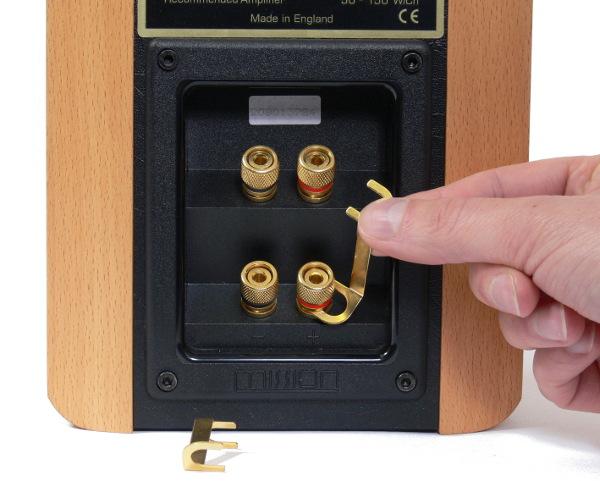- REVIEWS
Displays Electronics 
Speakers Sources 
Other Gear Software - TOP PICKS
- HOW TO
How To Buy 
How To Use 
Tech 101 - BLOGS
- NEWS
- FEATURES
- INSTALLS
Custom Installation - SUBSCRIBE
How Do I Use a Speaker’s Biamp Connections?
Q I have a home theater system powered by an AV receiver for watching movies, but I also want to connect a turntable and separate stereo amp to the system’s front speakers for listening to music. If a speaker has biamp connections, can you connect two separate sources to it? I want to connect the stereo amp to the top jacks on my speakers and my AV receiver to the lower jacks. Will that work? Clint Yarborough / via e-mail
A No, it will not. Here’s why: Those dual input jacks on the back of your speakers are intended for biamping, not connecting separate sources.
Take a look at the back of your speakers. You’ll see a pair of metal jumpers that connect both sets of input terminals and enable the audio signal to flow to both the tweeter/midrange drivers and the woofer. Inside the speaker is a circuit called a crossover that filters the mid and high frequencies from low-frequency portions of the audio signal and directs them to the appropriate drivers. When you disconnect those jumpers, however, you can use separate stereo amp channels to independently power the speaker’s midrange/tweeter drivers and woofer.
The benefit to biamping is often cited as increased headroom, though you can also get the same result by instead using a more powerful amp.
| Displays Electronics Speakers | Sources Other Gear Software | Top Picks of the Year Top Picks | Custom Install How To Buy How To Use |
Tech 101
|
Latest News Features Blogs | Resources Subscriptions |
WHERE TECHNOLOGY BECOMES ENTERTAINMENT
 © 2025 Sound&Vision
© 2025 Sound&VisionAVTech Media Americas Inc., USA
All rights reserved




























































